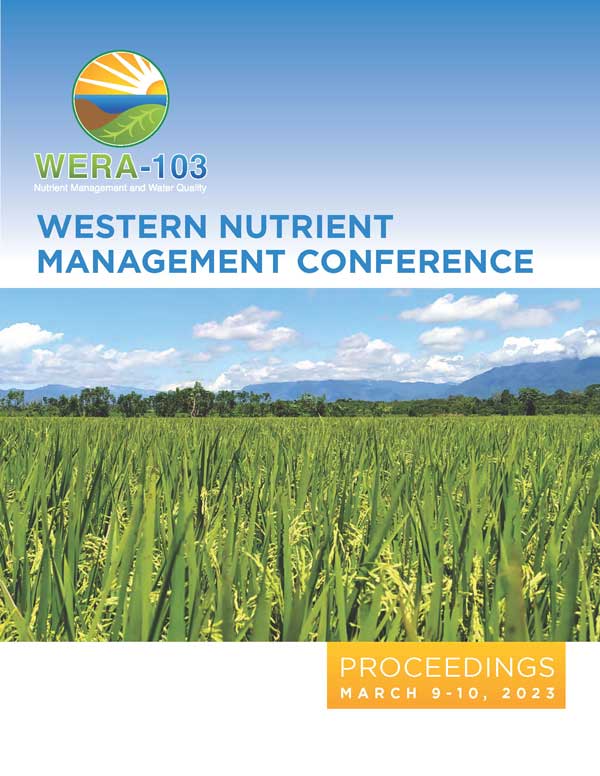Download the Conference Proceedings
Proceedings
Authors
| Filter results4 paper(s) found. |
|---|
1. Is Mitigation of Drought Stress By Zinc Oxide Nanoparticles Driven By a Nano-Specific Mechanism or Alleviation of Micronutrient Deficiency?It has been reported that zinc oxide (ZnO) nanoparticles (NPs) can promote drought tolerance in crops when used as soil amendments. However, many of these experiments were conducted in Zn-deficient growth media with no comparison to currently available Zn fertilization methods, making it unclear if the benefits from adding ZnO NPs were caused by a nano-specifc mechanism or simply by the mitigation of a micronutrient deficiency. A review of the literature shows that of 12 published experiments... J.W. Deakin, M. Potter, A. Cartwright, J. Hortin, D. Sparks, J.E. Mclean, D.W. Britt, A.J. Anderson, A.R. Jacobson, L. Yen |
2. Aggregate Size, C, N and P Dynamics in Different Dryland Organic Wheat SoilsUtah is one of the largest producers of dryland organic wheat in the US. Previous research indicates that a single application of compost can mitigate low and variable yields and improve soil properties over the long-term. Compost carryover is thought to be greater in high pH and highly calcareous soils compared with neutral, low calcareous soils. However, the mechanisms responsible are unclear. We evaluated the effect of a one-time compost addition on the formation, stability and carbon... I. Atoloye |
3. Effects of a One-time Compost Addition on Soil Health in a Rainfed Dryland Organic Wheat SystemMaintaining adequate soil fertility and health is a challenge in dryland organic wheat systems. This research examines the short-term impact of a one-time addition of compost on the soil health in a rainfed dryland organic winter-wheat (Triticum aestivum L.) fallow system. Field plot experiments were established in 2015 in a semiarid dryland organic wheat field in Snowville, Utah with the following treatments: control (C), compost at 12.5 Mg/ha dry weight (CM1), 25 Mg/ha (CM2), 50 Mg/ha... I. Atoloye, J. Reeve, A. Jacobson, E. Creech |
4. Effect of Cover Crops and Compost on Soil Water Availability in Organic Dryland WheatIn low input semi-arid regions, water is the major limiting factor in crop production. Cover crop biomass and compost are good source of organic matter, that improve biological activity and water holding capacity of soils. However, dryland organic wheat growers rarely apply soil amendments due to cost and cover crops can lead to the depletion of soil water which decreases the yield of subsequent winter wheat. This study investigates the potential for a synergy between compost addition and cover... K. Adeleke, J. Reeve, E. Creech, I. Atoloye |
